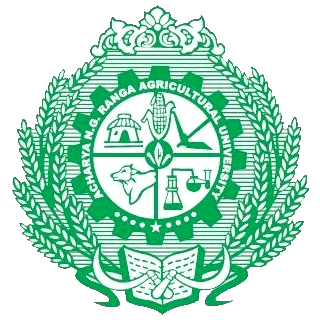ACHARYA N.G. RANGA AGRICULTURAL UNIVERSITY

ACHARYA N.G. RANGA AGRICULTURAL UNIVERSITY ANGRAU was established under the name of Andhra Pradesh Agricultural University (APAU) on June 12, 1964 through the APAU Act 1963. Later, it was renamed as Acharya N. G. Ranga Agricultural University on November 7, 1996 in honour of Acharya N. G. Ranga. The green colour emblem of the university has a gear wheel bearing the name of the university housing the motifs of an ear of corn, plough, laboratory apparatus, cattle, hut and a flower. The gear wheel is supported by a pair of sickles and an open book at the bottom and on sides by a pair of crowns of paddy crop bunches. The motifs represent the activities and domains of the university; the gear wheel denotes interconnectedness; efficiency and precision; progress and advancement; synchronisation and timing and order and structure; the open book symbolises education, knowledge and wisdom; sickles represent harvesting and agriculture; the laurels represent the harvest, success, victory a

.png)